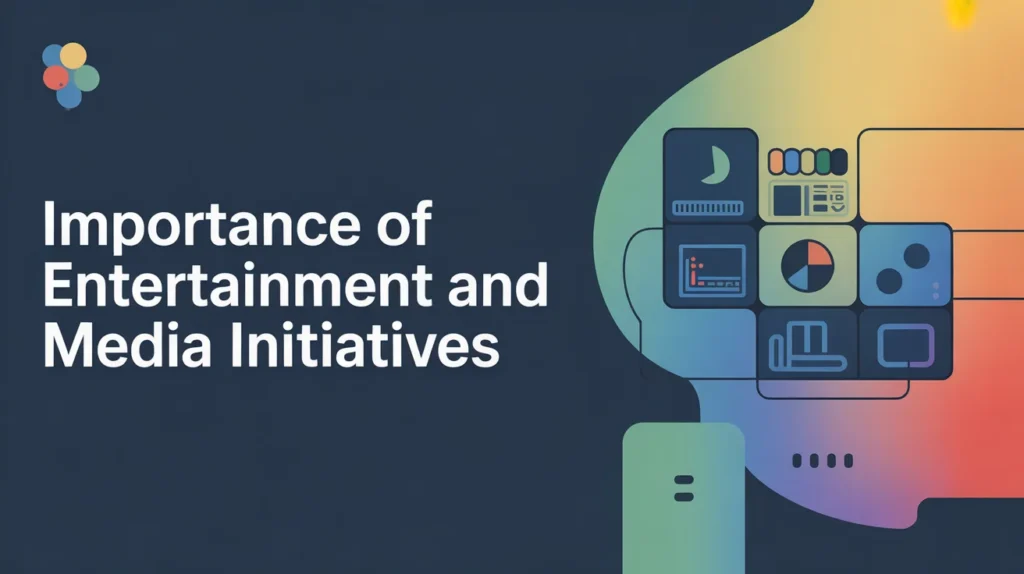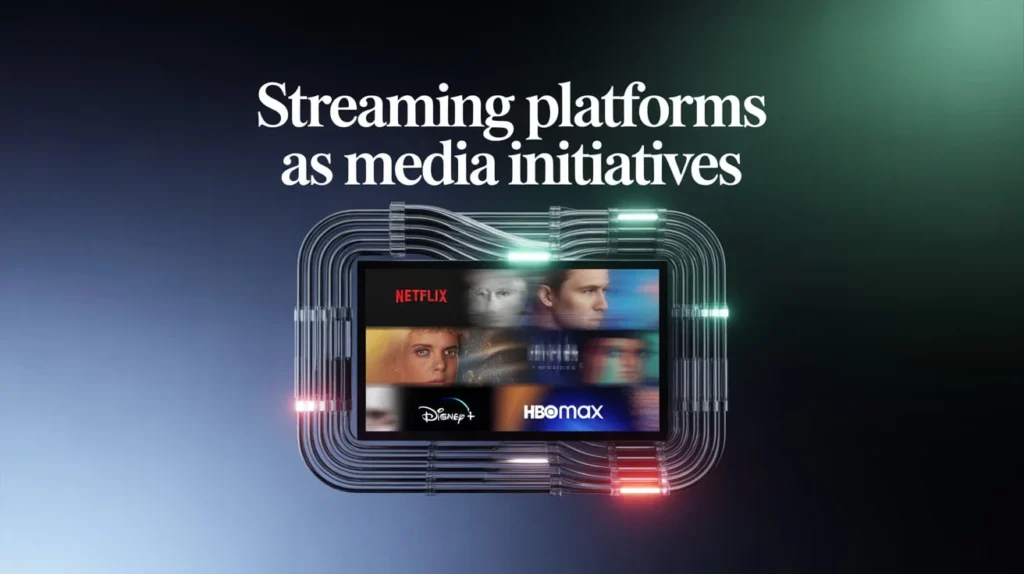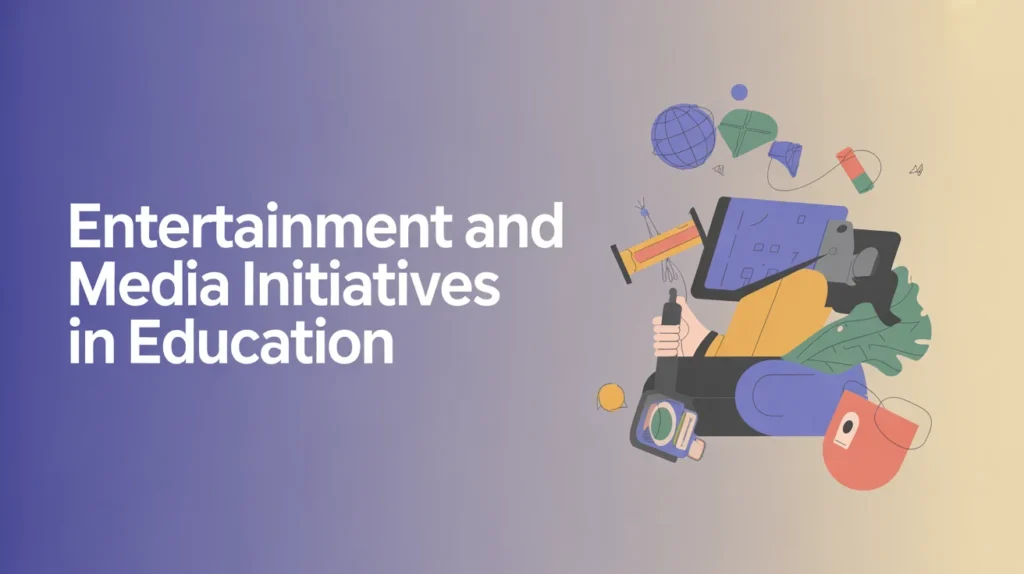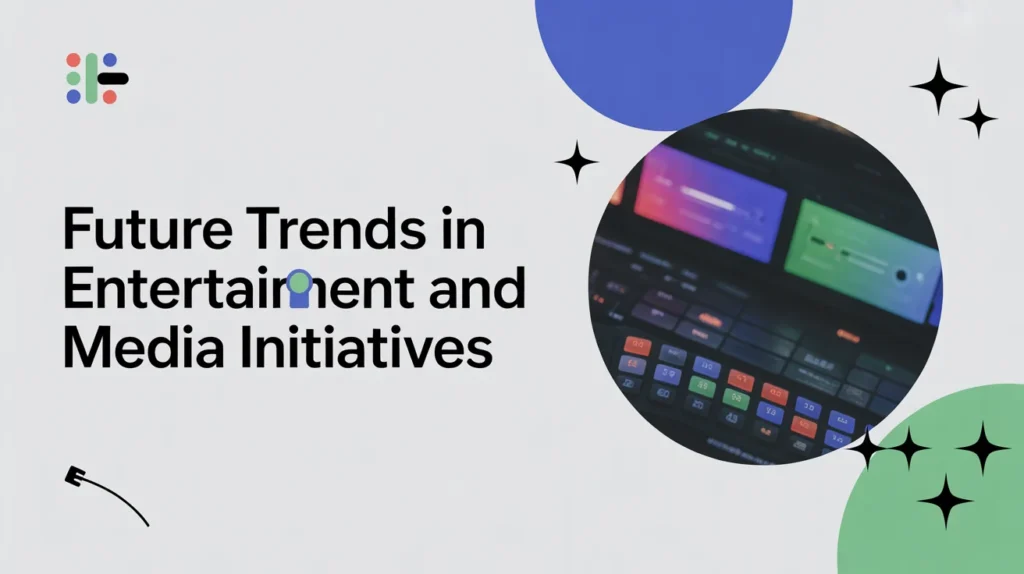In today’s fast-paced digital age, entertainment and media initiatives are shaping how we connect, consume, and create content. From streaming platforms and social media to virtual reality and interactive storytelling, these initiatives are redefining the way people experience culture, news, and entertainment.
With the global entertainment and media industry projected to surpass $2.9 trillion by 2030, organizations and creators alike are developing innovative strategies to engage audiences, drive growth, and stay competitive.
This article explores the evolving landscape of entertainment and media initiatives, highlighting their impact, challenges, and opportunities in a rapidly changing world.
The Evolution of Entertainment and Media Initiatives
The journey of entertainment and media initiatives spans centuries, starting from printed newspapers and radio broadcasts to today’s on-demand streaming and immersive gaming. Each era introduced fresh tools and strategies to capture audiences’ attention.
- Traditional Era: Print media, cinema, and TV dominated.
- Digital Shift: Rise of internet-based platforms like YouTube, Netflix, and Spotify.
- Interactive Phase: Social media, podcasts, and influencer-led initiatives.
- Immersive Future: AR/VR, AI-powered personalization, and the metaverse.
Importance of Entertainment and Media Initiatives

Entertainment and media initiatives are more than just fun—they influence society, economy, and culture.
- Cultural Influence: Shaping opinions, lifestyles, and trends.
- Economic Impact: Multi-trillion-dollar global industry with millions of jobs.
- Educational Role: Media initiatives provide infotainment, combining knowledge and engagement.
- Social Connection: Creating global communities across borders.
Digital Transformation in Media and Entertainment
The rise of digital tools has disrupted traditional media, opening new possibilities. Initiatives today focus on innovation and personalization.
AspectTraditional MediaModern Digital InitiativesContent DeliveryFixed schedules (TV, radio)On-demand (Netflix, YouTube, Spotify)Audience InteractionOne-way communicationTwo-way via social media & live streamingAccessibilityLimited to regionGlobal reach with internet connectivityPersonalizationGeneric broadcastingAI-driven recommendations and tailored content
Role of Technology in Entertainment and Media Initiatives
Technology is the backbone of modern initiatives. Some key examples:
- Artificial Intelligence: Personalized content, predictive analytics, and voice assistants.
- Blockchain: Secure payments, NFT-based media ownership, and royalty transparency.
- Virtual Reality & AR: Immersive concerts, 3D films, and interactive games.
- Cloud Computing: Scalable storage for streaming services and gaming platforms.
Streaming Platforms as Media Initiatives

Streaming platforms like Netflix, Amazon Prime, and Disney+ have revolutionized content consumption. They provide:
- Original content (Netflix Originals, Disney+ exclusives).
- Affordable subscription models.
- Cross-device accessibility.
- Data-driven recommendations.
These initiatives have disrupted cinema and television, making on-demand entertainment the norm.
Social Media Initiatives in Entertainment
Social media platforms like TikTok, Instagram, and YouTube Shorts empower creators to reach millions instantly. Brands and entertainers use social media initiatives to:
- Build communities.
- Launch viral campaigns.
- Connect directly with fans.
- Experiment with interactive formats like live Q&A and polls.
Content Marketing as a Media Initiative
Entertainment and media initiatives thrive on storytelling. Content marketing strategies include:
- Branded web series.
- Podcasts as marketing channels.
- Blogs and articles for thought leadership.
- Influencer collaborations.
This blend of information and entertainment—known as “infotainment”—builds long-term audience loyalty.
Entertainment and Media Initiatives in Education

Edutainment is a growing field, merging education with entertainment. Examples include:
- Gamified learning apps like Duolingo.
- Interactive documentaries on Netflix.
- YouTube channels dedicated to science, history, and skills.
Such initiatives engage learners while delivering knowledge effectively.
Media Initiatives for Social Impact
Entertainment isn’t only about fun—it can drive social change. Campaigns like:
- Climate awareness documentaries.
- Films addressing mental health.
- Music concerts for charity causes.
These initiatives combine influence with responsibility, creating lasting impact.
Challenges Facing Entertainment and Media Initiatives
Despite growth, challenges persist:
- Content Saturation: Too many platforms competing for attention.
- Piracy: Illegal downloads hurting revenue.
- Misinformation: Fake news spreading through digital media.
- Monetization Struggles: Balancing free content with revenue models.
Future Trends in Entertainment and Media Initiatives

The future promises exciting innovations:
- Metaverse Experiences: Virtual concerts, digital theme parks, and VR social spaces.
- Hyper-Personalization: AI predicting user moods for content suggestions.
- Sustainable Media: Green production practices in film and broadcasting.
- Interactive Storytelling: Choose-your-own-adventure style films and games.
Case Studies of Successful Initiatives
- Netflix’s Global Strategy – Producing local content like “Money Heist” and making it a worldwide hit.
- BTS and Social Media – Leveraging Twitter and YouTube to become a global sensation.
- Marvel Cinematic Universe – Cross-media storytelling across films, comics, and streaming.
These cases highlight how innovative initiatives can dominate markets.
Entertainment and Media Initiatives for Businesses
Businesses outside traditional entertainment also leverage media initiatives:
- Corporations producing branded films.
- Startups using podcasts to reach niche audiences.
- NGOs creating viral campaigns to raise awareness.
Such approaches expand reach and build credibility.
The Economic Impact of Entertainment and Media Initiatives
The industry is a major contributor to global GDP. For instance:
- Hollywood generates over $50 billion annually.
- Gaming industry outpaces both movies and music combined.
- Streaming platforms are expected to reach 1.6 billion users by 2028.
These initiatives not only entertain but also fuel economies.
FAQs
Q1. What are entertainment and media initiatives? They are strategies, projects, and innovations in the entertainment and media industry aimed at engaging audiences, distributing content, and driving cultural and economic growth.
Q2. Why are media initiatives important in today’s world? They influence culture, boost economies, educate communities, and foster global connectivity.
Q3. How do technology trends shape entertainment initiatives? AI, VR, blockchain, and streaming technologies enhance personalization, accessibility, and security.
Q4. What challenges do entertainment initiatives face? They struggle with piracy, content oversaturation, misinformation, and monetization hurdles.
Q5. What’s the future of media initiatives? Expect hyper-personalization, metaverse experiences, sustainable practices, and interactive storytelling.
Conclusion
Entertainment and media initiatives are at the heart of global culture, driving innovation, shaping communities, and influencing economies. From digital streaming and social media to immersive VR and socially responsible campaigns, these initiatives highlight the industry’s dynamic evolution.
As technology advances, the future promises even more personalized, engaging, and impactful experiences. Embracing these changes ensures that entertainment and media will remain a powerful force in society—bringing people closer, telling untold stories, and shaping the world of tomorrow.


